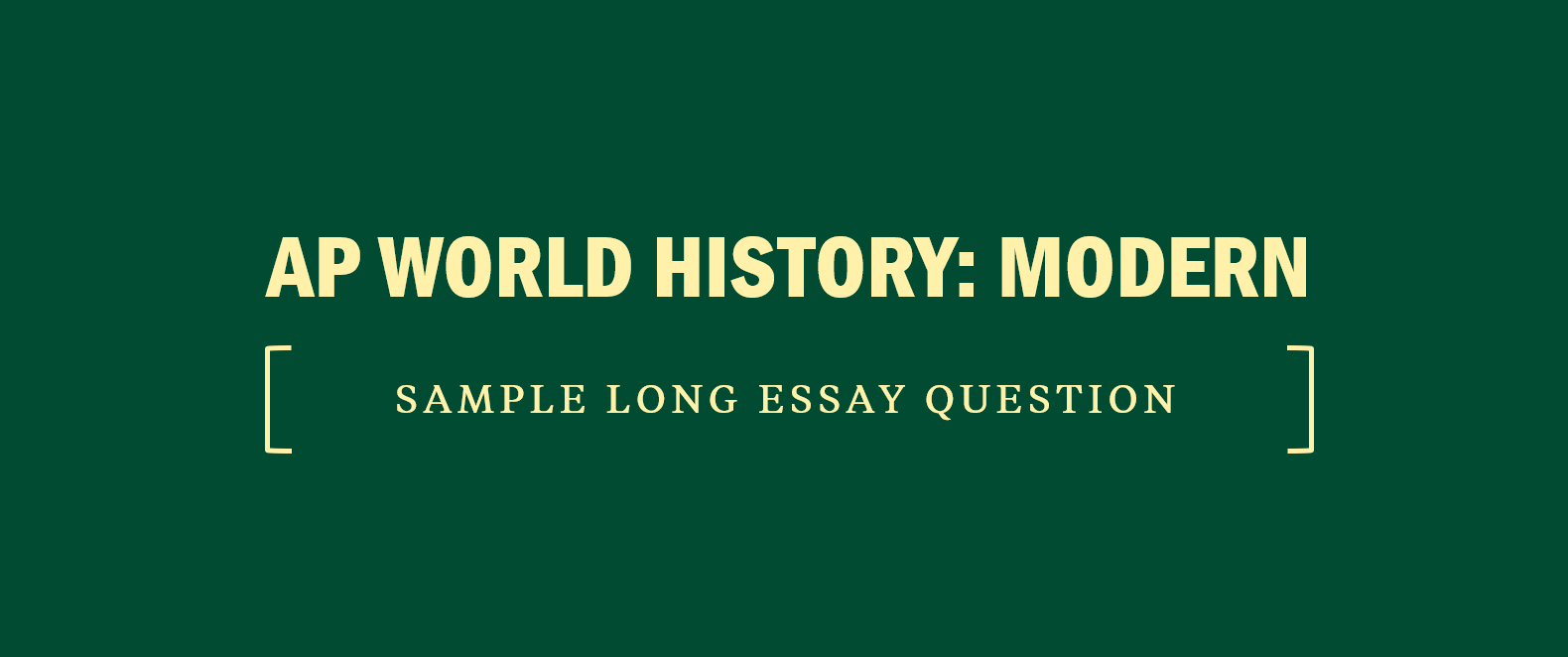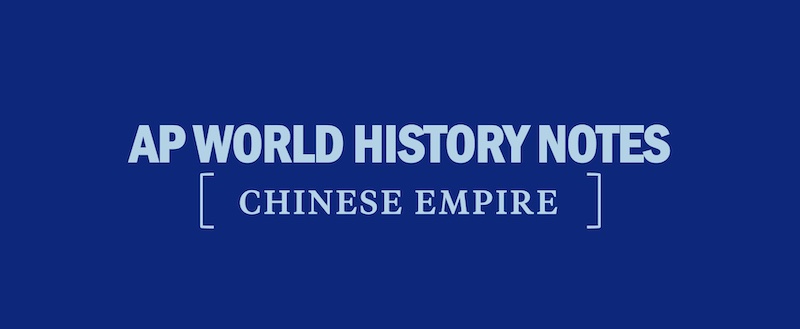

AP World History With Mr. Baker
Past ap essays.
This site contains all of the (released) essay questions that have appeared on the exam in the past. There are only so many questions they can ask, so if you study these you are likely to help yourself significantly on the exam: https://fiveable.me/world/ap-world-essay-topics/
AP Test Taker HW Due April 29th: Write this DBQ. Give yourself 10 minutes for planning and 45 minutes for writing: https://secure-media.collegeboard.org/apc/ap04_frq_world_histor_36115.pdf
Quizlet Assignment
Use these lists to complete your Quizlet assignment. Your flashcards are due by midnight on 6 March.
https://quizlet.com/join/9CeVwAHwj
Please add yourself to the class Quizlet ASAP via these links:
8Li: https://quizlet.com/join/9CeVwAHwj
8P: https://quizlet.com/join/3vYKDJbsC
We are going to use this resource to study for the AP test.
Ensure your username contains at least your first name so that I can tell who everyone is.
Ignore the readings.
Ignore all of the readings on the calendar over Winter Break. There are no assigned readings over Winter Break.
Flashcard Goals!
Thursday, 13 DEC: 21 flashcards
Friday, 14 DEC: 21 flashcards
Saturday, 15 DEC: 21 Flashcards
Sunday, 16 DEC: 20 Flashcards
Monday, 17 DEC: 20 Flashcards
Tuesday, 18 DEC: 20 Flashcards
Wednesday, 19 DEC: 20 Flashcards
Thursday, 20 DEC: Test
Friday, 21 DEC: Make the special focus flashcards
Tang and Song
First Essay This Friday!
Here are the questions for Friday’s LEQ:
Question 1: Compare and contrast two religious or philosophical movements of the Classical Era. In the development of your argument explain what was similar and what was different concerning these religions or movements.
Question 2: Compare and contrast two empires of the Classical Era. In the development of your argument explain what was similar and what was different concerning these empires.
Ensure you are preparing for this essay all week. Watch the LEQ videos on the writing page of this blog if you need a refresher!
Homework Due 8/28
Watch the following and take notes that will help you write your essay on this topic:
Welcome WHAPers!
Dear Students,
Thank you for joining me this year for A.P. World History! Please take a moment to familiarize yourself with this site, as it will be an invaluable resource for you this year. After checking things out, please head over to the Summer Project page to get started on your first assignment, which is due on the first day of class.

- Already have a WordPress.com account? Log in now.
- Subscribe Subscribed
- Report this content
- View site in Reader
- Manage subscriptions
- Collapse this bar

- AP Calculus
- AP Chemistry
- AP U.S. History
- AP World History
- Free AP Practice Questions
- AP Exam Prep


AP World History: Modern Sample Long Essay Question
In the period 1850 to 2001, new technologies emerged that had significant social, political, and economic effects. Develop an argument that evaluates the extent to which changes in the spread of ideas/information before and after World War I impacted societies.
Step 1: Analyze the Prompt
As you choose which question you will answer, begin thinking about what your thesis will entail and how your essay will demonstrate a complex understanding. The notes of a sample high- scoring writer are below. Note that the writer plans to develop a complex argument by addressing not only changes, as required by the prompt, but also continuities in societies before and after World War I.
Thesis : changes: faster spread of ideas made news, politics, and war more immersive and fast-paced; continuity: cross-cultural interactions transform all cultures (complex understanding, historical skill)
Step 2: Plan Your Response
- Context : Gutenberg → 2nd industrial revolution (steamship, train, telegraph) → digital revolution (radio, TV, Internet)
- Thesis : changes: faster spread of ideas made news, politics, and war more immersive and fast-paced; continuity: cross-cultural interactions transform all cultures ( complex understanding, historical skill )
- Evidence : War of 1812 versus WWII, Vietnam, Gulf War
- Evidence : American Revolution versus Cold War
- Evidence : language: Arab traders & Swahili, and modern business & English
- ¶ conclusion: impacts of tech on society have become more pervasive, though tendency towards cross-cultural influence has persisted
Step 3: Action! Write Your Response & Step 4: Proofread
Sample high-scoring response.
A key change between these eras of communication is how the speed of ideas’ dissemination impacts their force of impact and makes news more pervasive in civilians’ lives. In the distant past, the slow rate of communication caused reactions that were often months, or even years, after the initial communication. For instance, the final battle of the War of 1812 was fought after the signing of the war’s peace treaty because news had not yet traveled by ship across the Atlantic Ocean. In contrast, the peace treaties of WWII were celebrated in cities around the world mere minutes after news of their signing was shared by telegram and radio signals. The quick spread of images and video from the Vietnam conflict helped intensify Americans’ resistance to the war. In recent decades, 24-hour live coverage of conflicts, as in CNN’s being the first to provide constant coverage of a war during the Gulf War, allowed policy- makers and civilians to respond instantly to developments. As news became quicker, so its impact became more significant and more immediate.
Another change is that the quick and pervasive spread of ideas has made political conflicts more ideological and propaganda-based, further drawing societies into global disputes. Political rebellions of the eighteenth century, such as the American and French Revolutions, were based on Enlightenment ideals such as equality and representative government; they made use of propaganda in the form of printed political cartoons, tracts, and engravings to spread their ideals among the populace. However, the news communication made possible by radio and television after World War II helped propel the ideological conflict between the communist Soviet Union and the democratic United States into a worldwide phenomenon that intensely impacted both nations’ citizens. Technology was able to so effectively spread this war of ideas that the two major superpowers never engaged in direct battle themselves; still, citizens were drawn into a culture of propaganda that demonized the other side, made bomb shelters and bomb drills a part of daily life due to fear of nuclear warfare, and saw governments pour millions of dollars into the space race. Technology thus made it possible for conflicts to become all-immersive, even if they were based on ideas rather than physical confrontations.
Despite changes in communication, constants about its impacts remain. Cross- cultural communications still transform societies as they borrow and adapt ideas from others. For instance, from the eighth century onward, Arab traders who traveled throughout West Africa and along the eastern and northern coasts not only enriched communities economically but also spread Islam. Further, the necessity for communication among traders led to the rise of Swahili, a language that combined Arabic and African words and is still the lingua franca in much of East Africa today. Similarly, in modern times, as Britain and then the United States dominated world trade, English became a kind of worldwide lingua franca of modern business. Just as Arab traders spread their religion, American culture also diffused to other societies: almost every nation in modern times, for instance, built American-style fast food restaurants. Mirroring the trends related to the spread of news and politics, cultural diffusions in recent decades occurred at a faster rate and to a more pervasive extent than in the past. Whereas primarily traders would have adopted Swahili as it developed over generations, today English is taught in grade schools throughout the world.
Cultures that interact always influence each other. In the past century, how- ideas travel at a faster pace. As they have in ever, technology has made the impact of this spread of ideas more pervasive and significant as news and political the past, societies will continue to transform as they encounter ideas from other cultures, but with this increased intensity of communication, the impacts of ideas will continue to escalate.
You might also like

Call 1-800-KAP-TEST or email [email protected]
Prep for an Exam
MCAT Test Prep
LSAT Test Prep
GRE Test Prep
GMAT Test Prep
SAT Test Prep
ACT Test Prep
DAT Test Prep
NCLEX Test Prep
USMLE Test Prep
Courses by Location
NCLEX Locations
GRE Locations
SAT Locations
LSAT Locations
MCAT Locations
GMAT Locations
Useful Links
Kaplan Test Prep Contact Us Partner Solutions Work for Kaplan Terms and Conditions Privacy Policy CA Privacy Policy Trademark Directory

IMAGES
COMMENTS
Download free-response questions from past AP World History exams, along with scoring guidelines, sample responses from exam takers, and scoring distributions.
Exam essays should be considered first drafts and thus may contain grammatical errors. Those errors will not be counted against a student unless they obscure the successful demonstration of the content knowledge, skills, and practices described below
Exam questions assess the course concepts and skills outlined in the course framework. For more information, download the AP World History: Modern Course and Exam Description (.pdf) (CED). Encourage your students to visit the AP World History: Modern student page for exam information.
Thank you for joining me this year for A.P. World History! Please take a moment to familiarize yourself with this site, as it will be an invaluable resource for you this year. After checking things out, please head over to the Summer Project page to get started on your first assignment, which is due on the first day of class. Best, Mr. Baker
Mar 17, 2023 · The AP World History: Modern Exam requires you to complete a long essay question. Read on for an example long essay question. Read on for an example long essay question. In the period 1850 to 2001, new technologies emerged that had significant social, political, and economic effects.
Browse our range of College Board AP® History Past Exams and Mark Schemes below. Testing yourself with AP® History past exams is a great way to identify which topics need more revision, so you can ensure that you are revising as effectively as possible to help you get ready for your AP® History exam.